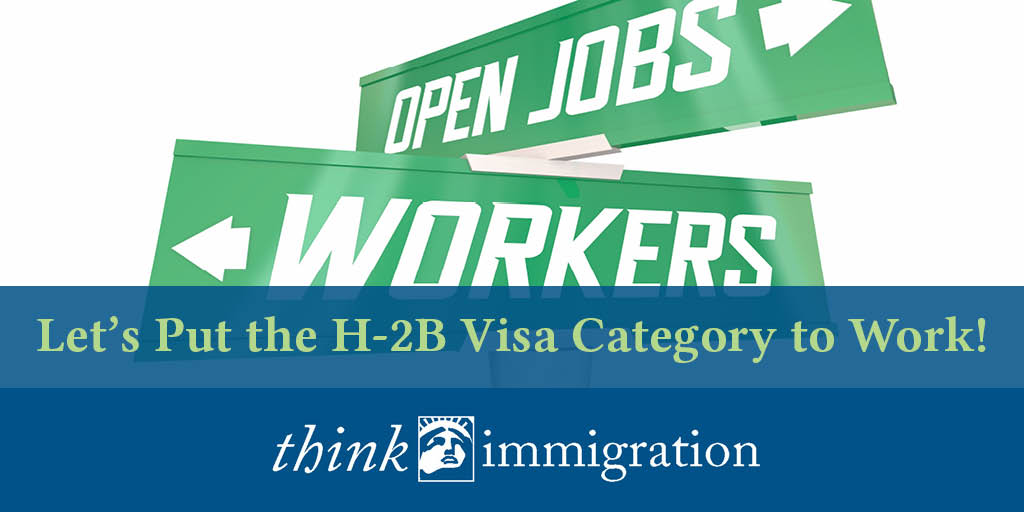When the H-2 visa category was created, Congress’s intent was to help American businesses hire foreign workers for jobs for which American workers were not available. The H-2B visa program was established to meet U.S. companies’ demand for temporary workers in non-agricultural occupations.
Congress allocated 66,000 visas per financial year for this program, with 33,000 visas available for workers who start work in the first half of the financial year, and the remaining 33,000 for the second half. The United States Citizenship and Immigration Services (USCIS) recently announced a proposed regulation that would allow the granting of an additional 64,7160 H-2B visas, of which 20,000 would be available to citizens of Colombia, Costa Rica, Ecuador, El Salvador, Guatemala, Haiti and Honduras . The remaining balance would be for returning H-2B workers or those who obtained an H-2B visa within the last 3 years. If an individual has held an H-2B visa for a total of 3 years, they must leave and remain outside the United States for at least 3 months before being eligible for another period of H-2B stay.
If you own a business and need to make decisions about how to supplement your workforce and are unable to find employees in the United States, the H-2B program is a potentially attractive option. However, due to the detailed timeline and procedural requirements, the program is a daunting and complex process.
The process:
H-2B visas are issued twice a year, in early October and then in April. As part of the process, employers must first obtain a Prevailing Wage Determination (PWD) from the Department of Labor (DOL). Upon receipt of the PWD, employers may request labor certification from the DOL no earlier than 90 days prior to the employer’s requirement start date.
Once the employment certificate is filed, employers are placed into groups related to the date the employment certificate was filed. There are three distinct groups: Groups A, B and C. Employers who file their employment certificate first (earliest) are placed in Group A.
The DOL judges Group A first, then moves on to Groups B and C. Employers cannot file a complaint with USCIS until they receive their labor certification from the DOL. Filing an application with USCIS, and ultimately receiving notice of receipt from USICS, is how they reserve their place in the queue for the limited number of visas.
Those placed in Groups B or C risk having their USCIS case rejected since visas are exhausted by the time they are able to file. Although Congress intended this program to help U.S. employers supplement their workforces, there are clearly significant obstacles preventing the H-2B program from achieving its goal.
Workforce challenges:
With a unemployment rate of 3.9%, Most businesses today face a labor shortage. Many already have a recruiting program underway but are unable to find enough American workers. Those who venture into the world of H-2B do so because they desperately need labor.
According to a study carried out by the University of Massachusetts Global, a nonprofit affiliate of the school, negative side effects of low unemployment include difficulty recruiting and retaining workers, lower productivity, and risk of later recession. A tight labor market also drives up costs for businesses, which will, in turn, increase inflationary pressures. The ripple effect of these potential consequences could ultimately lead to business bankruptcies and job losses for American workers.
A better option:
In order to meet changing labor demands, it seems to me that the H-2B program should not have an annual limit on the number of visas available, just like the H-2A visa program, which do not impose any. Removing, or at least increasing, the H-2B cap would help U.S. businesses meet their workforce needs.
It’s time for government to truly help, rather than hinder, businesses trying to hire badly needed workers for available positions. The creation of artificial and arbitrary barriers, lotteries and quotas contributes neither to our economy nor to our national security. Hindering our economy in this unnecessary manner is simply un-American.

